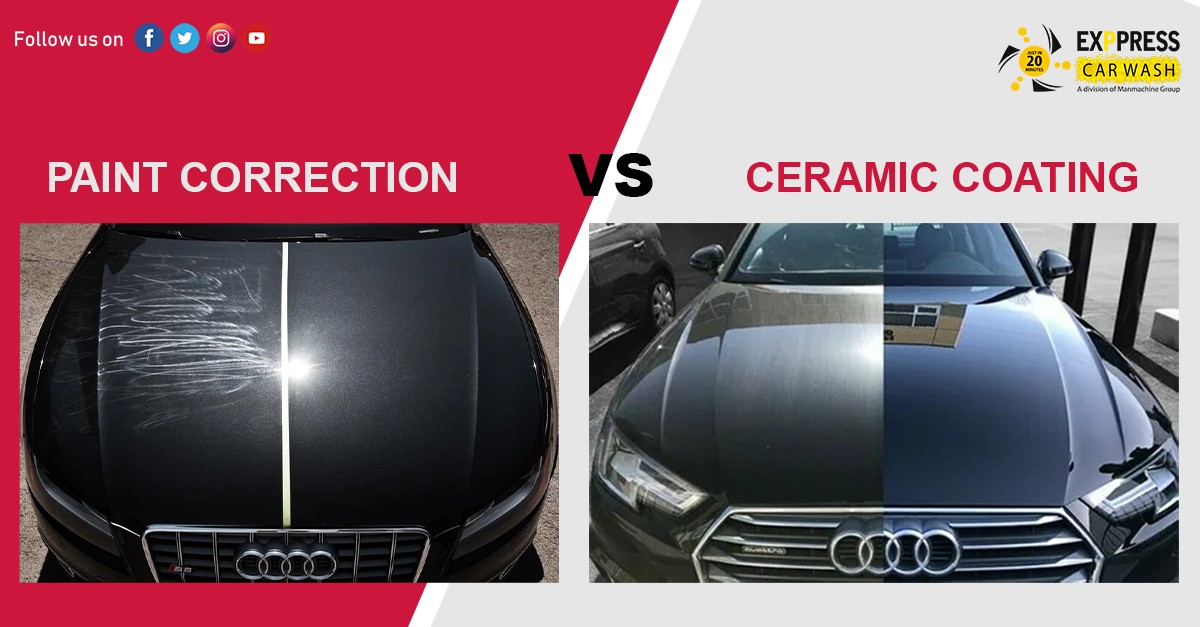The Function of Ceramic Coating in Preserving a Perfect Complete on Your Cars and truck
The Function of Ceramic Coating in Preserving a Perfect Complete on Your Cars and truck
Blog Article
Exploring the Science Behind Ceramic Layer and Its Effect On Automobile Explaining
The application of ceramic finishing in cars and truck outlining represents a significant improvement in auto care, rooted in its sophisticated chemical residential or commercial properties, mostly silica dioxide and titanium dioxide. As we explore the complexities of the application process and the lasting ramifications for car maintenance, it becomes clear that the choice of ceramic coating can fundamentally modify one's technique to automobile care.
What Is Ceramic Layer?
Ceramic covering is a contemporary solution that has actually gained appeal in the automotive outlining industry for its capability to provide resilient protection for automobile surface areas. This sophisticated safety layer is usually made up of silica dioxide (SiO2), which forms a solid bond with the car's paint, developing a long lasting shield against environmental impurities. Unlike standard wax or sealants, ceramic coverings offer superior resistance to UV rays, chemical discolorations, and physical abrasions.
The application of ceramic finish includes a meticulous process, where the automobile's surface area is thoroughly cleaned up and sanitized prior to the finishing is applied (Ceramic Coating). When healed, the coating enhances the car's gloss, depth, and quality, supplying a showroom-quality finish that lasts for many years. Among the essential benefits of ceramic coating is its hydrophobic properties, which ward off water and dust, making maintenance much easier and lowering the regularity of cleans
The Chemistry of Ceramic Coating
A basic element of ceramic finish exists in its chemical structure, mostly defined by the existence of silica dioxide (SiO2) This compound is important to the formation of a resilient, protective layer that bonds chemically to the vehicle's surface area.
In enhancement to SiO2, several ceramic layers include titanium dioxide (TiO2) and various other additives to enhance their performance features. TiO2, for circumstances, adds to raised solidity and chemical resistance. The communication between these substances produces an one-of-a-kind molecular structure that offers a high degree of protection against environmental elements such as UV rays, acid rain, and oxidation.
Furthermore, the application process typically entails a meticulous prep work of the surface to ensure optimal adhesion of the finishing. This chemistry not just makes sure a resilient surface but also enhances the visual appeal of the car. Understanding the elaborate chemistry behind ceramic finishings is essential for detailing experts that intend to provide superior defense and longevity for their clients' cars.
Benefits of Ceramic Covering
While describing specialists often highlight the advantages of ceramic finishings, their advantages prolong much past visual appeals. The key advantage transcends defense against environmental pollutants. Ceramic finishings create a hydrophobic surface area that drives away dirt, gunk, and water, significantly decreasing the regularity of laundries and the effort called for to preserve a lorry's look. This protective layer additionally shields the you can try these out paint from hazardous ultraviolet rays, avoiding oxidation and fading gradually.
In addition, ceramic finishings boost the longevity of the vehicle's finish. Unlike traditional waxes or sealants, which may last a few months, ceramic coatings can sustain for many years, offering a long-term solution for cars and truck care. This sturdiness translates to set you back financial savings, as owners are less most likely to need constant reapplication.
Furthermore, ceramic finishings are resistant to chemical discolorations and etching, which can happen from acidic substances like bird droppings or tree sap. This resistance not just preserves the vehicle's aesthetics yet also decreases prospective damage - Ceramic Coating. On the whole, the financial investment in ceramic covering offers auto proprietors a significant return in regards to security, simplicity of maintenance, and long-lasting aesthetic charm, making it an increasingly popular selection in the realm of automotive describing
Application Process Discussed

When the surface is effectively prepared, the ceramic finish can be used. Utilizing an applicator pad, the technician uses the coating in small areas, functioning in a crosshatch pattern to guarantee even insurance coverage.
When cured, the ceramic coating forms a strong bond with the paint, providing enhanced security and a shiny surface. Appropriate application is necessary to maximize the longevity and performance of the ceramic finish.

Lasting Influence On Lorry Care
The long-lasting influence of ceramic finishing on lorry care is considerable, as it basically alters exactly how proprietors maintain their automobiles. By creating a long lasting, hydrophobic layer on the automobile's surface, ceramic finishes minimize the adherence of dirt, crud, and contaminants. This residential or commercial property lowers the frequency of cleaning called for, ultimately conserving water and cleaning items.
Additionally, the UV defense provided by ceramic coverings aids to prevent oxidation and fading of the lorry's paint, protecting its visual allure and resale value in time - Ceramic Coating. This safety obstacle also decreases the possibility of scrapes and swirl marks, which prevail concerns in typical paint surfaces
Furthermore, ceramic layers assist in less complicated maintenance, permitting owners to clean their lorries with very little initiative. The smooth surface makes it challenging for impurities to bond, allowing less complex removal during regular cleaning.
In the future, the investment in ceramic finish may cause cost savings in automobile treatment products and solutions. On the whole, the enduring benefits of ceramic finishes not just improve have a peek at these guys the look of vehicles however additionally add to an extra sustainable and effective strategy to vehicle upkeep.
Verdict
To conclude, the application of ceramic coating stands for a considerable advancement in cars and truck outlining, driven by its unique chemical make-up of silica dioxide and titanium dioxide. This technology not just improves the aesthetic allure of lorries yet also gives durable defense against environmental hazards and put on. The long-lasting benefits, consisting of reduced maintenance frequency and boosted resilience, emphasize the value of ceramic coatings as a crucial financial investment for preserving lorry appearance and honesty in time.

Report this page